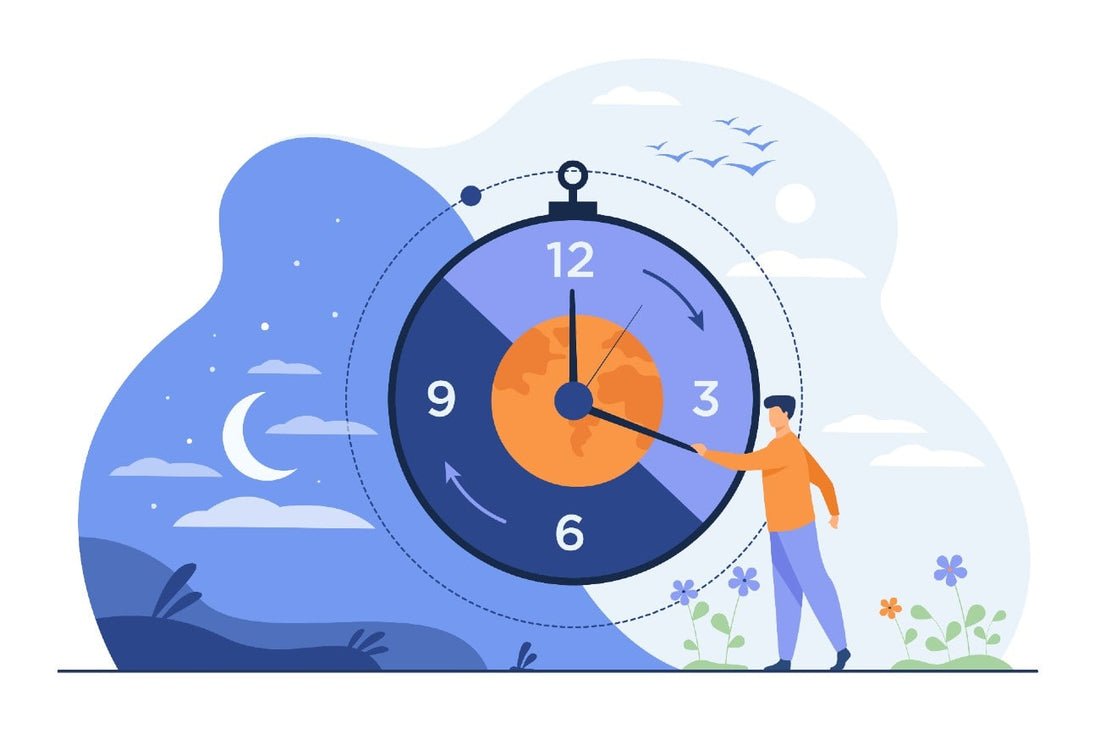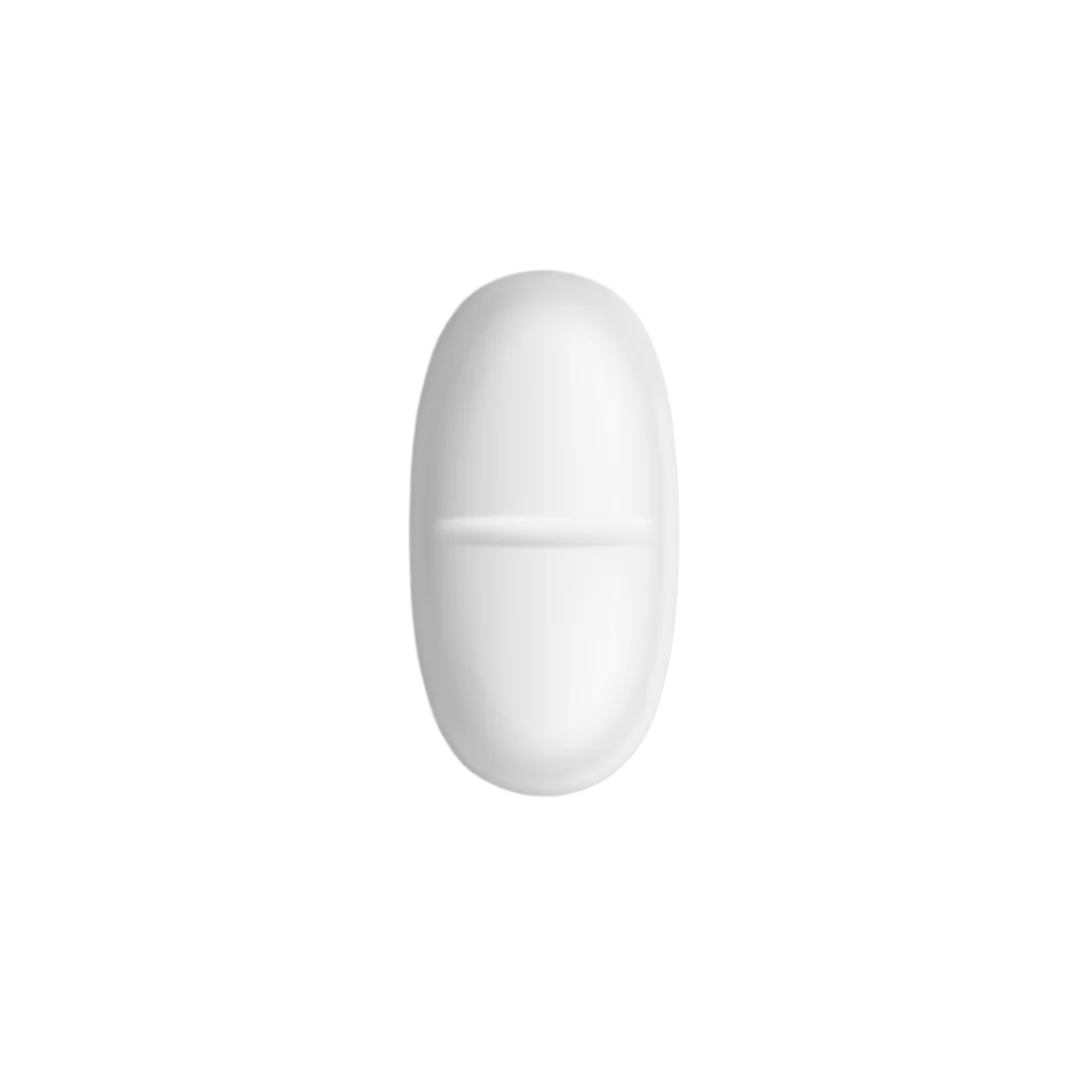Harnessing the Power of Your Internal Clock: A Guide to Understanding Circadian Rhythm

Have you ever had those wonderful mornings when you wake up refreshed and ready to take on the world? On the other hand, we've all had mornings when the alarm clock was met with groans and sluggishness. The underlying cause of these varied experiences is your internal clock, also known as the circadian rhythm. In this piece, we will delve into the intriguing world of circadian rhythm, investigating its role in regulating sleep patterns, overall well-being, and daily productivity. You can harness the power of a good night's sleep and wake up feeling refreshed every morning by knowing the underlying science and implementing tactics to enhance your circadian rhythm.
The Science Behind Circadian Rhythm
The suprachiasmatic nucleus (SCN), a small part of your brain that serves as the master clock, sits at the center of your circadian rhythm. The SCN regulates a variety of biological functions, such as sleep-wake cycles, hormone release, body temperature, and metabolism. Light and melatonin both play important roles in regulating your circadian cycle. The SCN receives information about light exposure via the retinohypothalamic tract, a specific channel. When light enters your eyes, it triggers melanopsin-containing retinal ganglion cells in the retina, which send signals directly to the SCN.
Light exposure is essential for a healthy circadian rhythm. It aids in the synchronization of your internal clock with the external day-night cycle, ensuring that your body's processes coincide with the optimal times for wakefulness and sleep. Daytime light exposure improves alertness, cognitive performance, and mood. It prevents the release of melatonin, the hormone that initiates and maintains sleep. The SCN instructs the pineal gland to begin releasing melatonin as evening approaches, raising tiredness and preparing your body for sleep.
Other elements, in addition to light, can influence your circadian rhythm. Mealtimes, job schedules, and social activities can all have an impact on your internal clock. This is why it is critical to develop consistent habits and sleep-wake schedules. Maintaining a consistent schedule accustoms your body to the timing of sleep and awake, improving the effectiveness of your circadian rhythm.
Recognizing the Sleep-Wake Cycle

The sleep-wake cycle is a natural biological process that regulates your sleep and awake patterns. It is also known as the sleep-wake rhythm or the diurnal rhythm. It is influenced by the interactions of your internal biological clock, the circadian rhythm, and environmental stimuli like light and darkness.
The sleep-wake cycle is divided into numerous stages, each of which serves a specific purpose in improving overall health and well-being. These stages include wakefulness, rapid eye movement (REM) sleep, and non-rapid eye movement (NREM) sleep.
The state of being fully awake and alert is referred to as wakefulness. During this phase, your brain is actively processing information while you engage in a variety of activities. It is the period during which you are most attentive and responsive to stimuli in your surroundings.
Rapid eye movement, increased brain activity, and vivid dreaming define REM sleep, also known as dream sleep. REM sleep causes your brain to be very active and your muscles to paralyze, offering a safety mechanism to keep you from acting out your dreams. This stage is critical for memory consolidation, emotional control, and learning, among other cognitive tasks. In newborns and children, REM sleep is also linked to brain growth.
NREM sleep includes the final stages of sleep and is separated into three stages: N1, N2, and N3. N1 is the stage between wakefulness and sleep, distinguished by light sleep and easy awakenings. N2 is a deeper sleep stage in which your brain waves slow and your body temperature and heart rate decrease. It is a vital stage for physical health restoration and maintenance, including muscle regeneration and growth. Finally, N3, also known as deep or slow-wave sleep, is the stage of sleep distinguished by the slowest brain waves and the most profound relaxation. It is the most restorative stage of sleep, during which the body heals tissues, boosts the immune system, and promotes physical recovery overall.
A complex interaction of hormones, neurotransmitters, and neuronal networks regulates the sleep-wake cycle. Adenosine, a chemical substance that builds in your brain during wakefulness, progressively raises sleep pressure, encouraging sleep to begin. Adenosine levels fall throughout sleep, contributing to the restoration of consciousness upon awakening.
The sleep-wake cycle can be influenced by a variety of variables. Light exposure is the most noticeable external factor. Natural light exposure during the day helps to regulate the sleep-wake cycle by signaling wakefulness and decreasing melatonin production. Darkness, on the other hand, encourages the release of melatonin, which aids in the onset of sleep.
Chronotypes and Personal Sleep Preferences
Individual differences in sleep-wake patterns and preferences based on a person's internal biological clock are referred to as chronotypes. While most people have a range of "normal" sleep-wake habits, some people prefer to be "morning types" (also known as "larks" or "early birds") or "evening types" (also known as "night owls"). Genetics influence these preferences, which can have a substantial impact on sleep quality, alertness, and overall well-being.
Morning people are the most alert and lively in the early morning hours. They like to go to bed and wake up early, and they often find it simpler to adjust to standard job and school routines. Morning people may have peak cognitive function and increased productivity in the early hours of the day. They are more likely to wake up feeling refreshed and alert, which can contribute to a sense of well-being.
Evening types, on the other hand, prefer to stay up late and wake up later in the morning. They frequently have heightened alertness and activity in the evenings and may find it difficult to fall asleep early. Evening people may feel more productive and creative later in the day and evening. However, their normal sleep-wake patterns may contradict typical cultural routines, making meeting early morning commitments problematic.
Understanding your chronotype and personal sleep preferences might assist you in optimizing your sleep-wake cycle for improved sleep quality and everyday performance. You may work with your body's natural cycles and improve your overall well-being by aligning your sleep routine with your chronotype.
Individual variances exist, even though chronotypes give a broad structure. Some people are a mix of morning and evening personalities, expressing traits from both. A "neutral" or "intermediate" chronotype is what this is. Furthermore, chronotypes can alter a person's lifespan as a result of factors such as age, hormone changes, and lifestyle.
Using Your Circadian Rhythm to Improve Your Sleep and Wakefulness
Exposure to light

Light exposure is critical for controlling your circadian rhythm. To align your internal clock with the natural day-night cycle, spend as much time as possible outside throughout the day. Spend time outside, preferably in the morning, absorbing the complete spectrum of natural light. This promotes alertness, improves mood, and reduces melatonin production. In the evening, however, limit your exposure to harsh artificial light, particularly from electronic devices, as it can interfere with your body's ability to wind down and prepare for sleep. In the evening, consider utilizing dimmer, warmer lighting to create a peaceful atmosphere. Check out our article to learn more about the effects of light on sleep.
Environment for Sleep
Creating a sleep-friendly atmosphere might have a major impact on your sleep quality. Make certain that your bedroom is cold, quiet, and dark. To filter out exterior light, use blackout curtains, eye masks, or sleep masks. Use earplugs or a white noise machine to reduce noise disruptions. Purchase a comfy mattress as well as pillows that assist your favorite sleeping position. By managing your sleep environment, you may establish the perfect conditions for restful sleep and make the transition into sleep easier.
Maintaining a constant Sleep Schedule
A constant sleep schedule is essential for improving your circadian rhythm. Even on weekends, try to go to bed and wake up at the same time every day. This helps to adjust your internal clock and ensures that you get enough sleep. Consistency is especially critical for evening types, who may have delayed sleep-wake habits. Establishing a consistent sleep regimen, which includes winding down with relaxing activities before bed, might signal to your body that it's time to sleep.
Mindful Evening Routines
Engaging in relaxing activities can induce relaxation and prepare your body for sleep. Consider creating an evening routine that includes things like reading a book, having a warm bath, practicing relaxation techniques like deep breathing or meditation, or doing gentle stretching or yoga. Avoid indulging in stimulating activities such as intensive exercise or work-related tasks close to bedtime. You may allow your body and mind to unwind and shift into a more restful state by creating a buffer zone between stimulating activities and sleep.
Habits of a Healthy Lifestyle
Maintaining an overall healthy lifestyle can help to sustain a healthy circadian rhythm. Regular exercise, particularly early in the day, can aid with sleep and wakefulness regulation. Large meals, caffeine, and alcohol should be avoided close to bedtime because they can impair sleep. Limit daytime naps, particularly in the late afternoon or evening, as they can disrupt overnight sleep. Furthermore, stress management skills, stress-reduction tactics, and prioritizing self-care can all lead to better sleep quality.
You can optimize your circadian rhythm, encourage better sleep quality, and increase daytime wakefulness by applying these measures. Remember that your body may need time to acclimate to a new routine, so be patient and consistent. Pay attention to your body's natural cues and make changes until you find out what works best for you.
Circadian Rhythm Disruptions and Health Effects
Circadian rhythm disruptions can have serious health consequences. The internal clock regulates several physiological functions, including hormone secretion, metabolism, immunological function, and cardiovascular function. When the circadian rhythm is interrupted or misaligned regularly, it can affect these processes and contribute to a variety of health problems. Chronic abnormalities in circadian rhythm have been linked to an increased risk of sleep problems, mood disorders (such as depression and anxiety), cognitive deficits, metabolic disorders (such as obesity and diabetes), cardiovascular disease, and reduced immunological function.

Despite our best efforts, several things can occasionally interrupt our circadian rhythm. Jet lag is a typical interruption that occurs when you travel across time zones, throwing your internal clock out of sync. Adjusting your sleep-wake pattern gradually before and after travel, as well as exposing yourself to natural light, can help reduce the effects of jet lag. If you don’t know how to beat jetlag, follow this link to learn more.
Shift workers also face severe disruption because their work patterns frequently interfere with the natural sleep-wake cycle. This interruption can cause difficulty falling asleep, poor sleep quality, and excessive drowsiness at work. Long-term shift work has been linked to an increased risk of a variety of health problems, such as sleep difficulties, cardiovascular disease, metabolic disorders (such as obesity and diabetes), and mental changes. Maintaining a consistent sleep schedule, regulating the sleep environment, and minimizing light exposure are all critical techniques for shift workers to reduce the effects of circadian rhythm disruptions. Check out our article How to Stay Awake During Night Shifts for more information.
Strategies for Resetting and Adjusting Your Internal Clock

Try B-Sync ON: By introducing B-Sync ON into your routine, you will be able to experience a smoother transition from sleep to waking, allowing you to adjust your internal clock and begin your day feeling refreshed and invigorated. B-Sync ON is a wake supplement that helps and improves the wake-up process. When taken before bed, B-Sync ON gradually releases its stimulating nutrients just before waking up, assisting in the synchronization of the internal clock. This wake-up supplement delivers long-term benefits, assisting you in maintaining optimal energy levels and improving your general well-being.
Light treatment: Light treatment entails exposing yourself to bright, precisely regulated light to adjust your circadian cycle. It can aid in the treatment of circadian rhythm problems and involves the use of light boxes or lamps that resemble natural sunshine.
Adjusting Your Sleep-Wake Routine Gradually: When changing your sleep-wake routine, make gradual changes by altering your bedtime and wake-up time by 15-30 minutes every few days. This allows your body to adjust to the new schedule more easily.
The Ideal Sleep Environment: Make your bedroom a sleep-friendly environment by keeping it dark, quiet, and cool. To enhance better sleep quality, use blackout curtains, sleep masks, and white noise machines.
Maintaining a consistent sleep pattern and bedtime routine, even on weekends, is important. This contributes to the regulation of your circadian rhythm and reinforces your body's natural sleep-wake cycle. Remember to be patient and consult with a healthcare professional or sleep specialist if you're experiencing persistent circadian rhythm disruptions or difficulties adjusting. They can provide personalized guidance and support.
References
- https://pubmed.ncbi.nlm.nih.gov/7990870/
- https://pubmed.ncbi.nlm.nih.gov/1586650/
- https://pubmed.ncbi.nlm.nih.gov/18591489/
- https://pubmed.ncbi.nlm.nih.gov/1586650/
- https://www.researchgate.net/publication/10868224_Role_of_Melatonin_in_the_Regulation_of_Human_Circadian_Rhythms_and_Sleep
- https://pubmed.ncbi.nlm.nih.gov/16251952/
- https://www.sciencedirect.com/science/article/abs/pii/S1087079205000420
- https://www.researchgate.net/publication/8109349_A_marker_for_the_end_of_adolescence
- https://journals.plos.org/plosone/article?id=10.1371/journal.pone.0022679
- https://pubmed.ncbi.nlm.nih.gov/23004349/
- https://stacks.cdc.gov/view/cdc/78374
- https://pubmed.ncbi.nlm.nih.gov/31254050/







